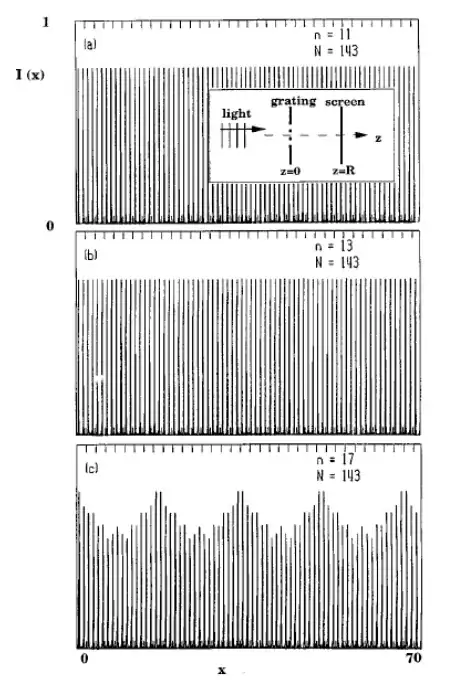If it were as easy as cutting slits into metal foil, or even doing photolithography at the sub-10nm regime, then it would have been done by now, but that might not be a satisfactory answer. It's a good question and should not be dismissed.
The question is similar to "what is stopping us from achieving a computational speedup by running Shor's algorithm by merely cutting a bunch of slits into a metal foil, and looking at the interference patterns when light is shown through?" .
Indeed, Shor has referred to Shor's algorithm as a "computational interferometer." For example, one thing that quantum computers can do, and that diffraction gratings can do, is perform Fourier transforms on large data sets.
But diffraction gratings don't have much in the way of adaptive control, and you have to spend exponential resources before-hand in order to leverage the constructive and destructive interference of the photons.
For example, you could cut slits in your foil in a manner where the spacing is $a^x\bmod N$. Shining light through such a diffraction grating, even a single photon of light, will perform the quantum Fourier transform.
However, in this case you had to cut your diffraction grating a-priori into $a^x\bmod N$; that is, you had to perform an exponential number of cuts in the first place.
It's not clear how such non-adaptivity is still powerful enough to solve Shor's algorithm, or whether you would always need to pre-cut your grating with an exponential number of cuts in the first place.
Indeed, the very procedure in the questions was proposed by Clauser and Dowling back in '96, in a PRA paper titled "Factoring integers with Young's N-slit interferometer." They use such an experiment to factor $143$ into $11\times 13$ as below.

They estimate that, with the lithography of 1994, they could factor four-to-five digit numbers (I guess with current photolithography 30 years on we could maybe factor numbers up to a billion or so).
But of note Clauser and Dowling still emphasize that there'd be exponential scaling of resources if using only coherence and interference (and not using entanglement). To factor cryptologically significant numbers, one would have to tighten the spacing further and/or ramp up the laser power exponentially as well.
